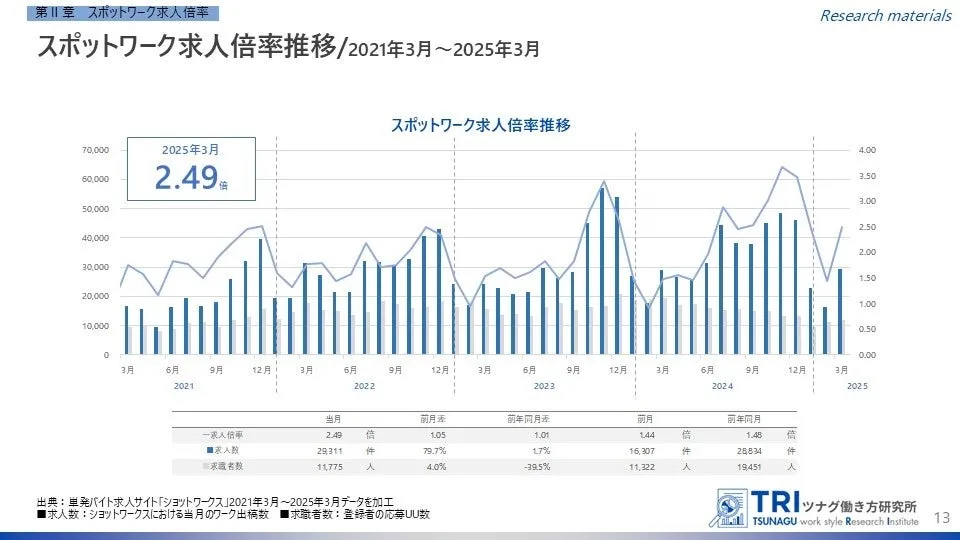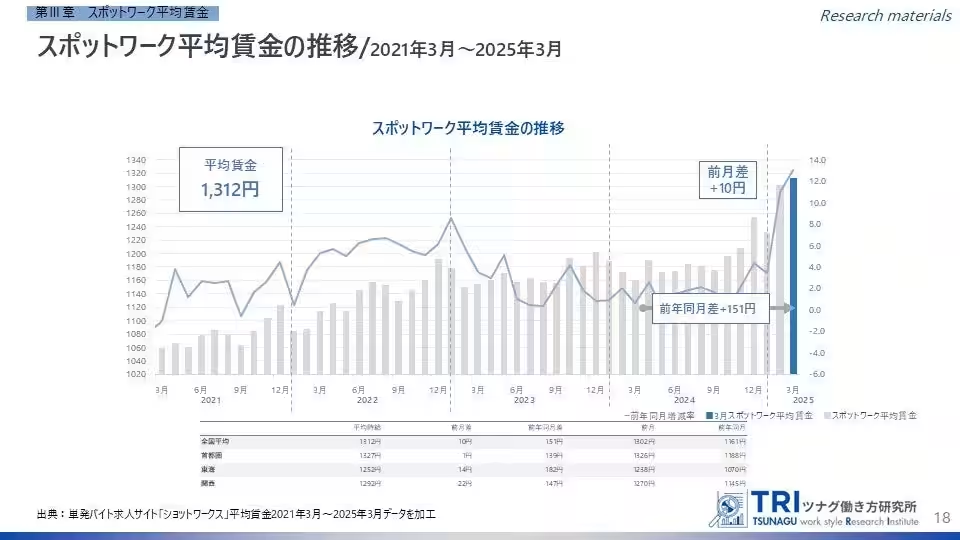

Spot Work Job Market Surges: Recruitment Rate Hits New Heights
Rise in Spot Work Opportunities: A Monthly Overview
Recent findings from Tuna Group Holdings' Spot Work Research Institute highlight a significant increase in the job market for short-term, contract-based work. This sector has experienced a recruitment rate of 2.49 times the number of available positions, marking a substantial rise from previous months, specifically up 1.05 points in February 2025. This consistent growth has been observed for the last ten months, demonstrating a strong rebound and ongoing demand for spot workers in various industries.
Job Market Metrics
1. Recruitment Rate: An impressive recruitment rate of 2.49 signifies that there are nearly two and a half job openings for every spot worker available. This is an increase of 1.01 points from the same month last year, showing the market's expanding nature.
2. New Job Listings: Despite a growing recruitment rate, new job listings have reflected a decline, with a reported number of 69,824 positions, marking a 15.9% drop year-on-year. Transportation and driver roles have been particularly affected, with new listings plummeting 44.4% compared to last year. This downward trend raises concerns about sector stability even as an increase in demand presents new opportunities for workers.
3. Average Wages: The average wage for spot workers has risen to 1,312 yen, surpassing the 1,300 yen threshold for the second consecutive month. This increase of 10 yen from the previous month and a significant 151 yen from last year suggests that the demand for spot work is driving up compensation rates, offering a financial advantage over traditional part-time jobs.
Comparatively, the standard average wage for part-time jobs stands at 1,254 yen, revealing that spot work positions tend to pay about 58 yen more than conventional positions. Within the three primary sectors, the highest earnings are seen in warehouse and labor jobs, with an average pay of 1,308 yen.
Spot Work Defined
Spot work refers to jobs that are short-term and not part of a continuous employment relationship. It includes two main types: gig work, such as deliveries for services like Uber Eats, and one-off temporary contracts. This flexible work arrangement is becoming increasingly popular, driven by changes in personal circumstances, such as the post-COVID shift in the employment landscape, and the growing desire for additional income among workers.
Current Market Trends
The rise in spot work, particularly following the COVID-19 pandemic, has seen a notable growth in the labor market, projected to continue expanding due to various factors:
- - Economic Shifts: Changes in labor regulations aimed at controlling overtime and reduced working hours during the pandemic have encouraged workers to seek additional employment opportunities.
- - Corporate Demand: Companies are pushing for increased efficiency and optimization of labor costs, wanting to deploy staff only when necessary.
- - Technological Advancements: Innovations in employment platforms allow for quick, on-demand job matching for spot workers and employers, enhancing the flexibility of this employment sector.
Importance of Ongoing Research
The Ministry of Internal Affairs and Communications in Japan introduced broader labor metrics in 2018, which now aids the understanding of the labor pool. The insights from spot work job market reports provide invaluable data on labor dynamics and employment shifts. They reveal trends in potential labor force utilization, contributing to overall economic growth and job stability.
In summary, the landscape of short-term employment in Japan is evolving, as reflected in the recent reported data. These changes signify not only an adaptation of work styles but also highlight the importance of monitoring this expanding labor market to recognize its opportunities and challenges. The Tuna Group’s Spot Work Research Institute aims to provide comprehensive insights into these trends, promoting informed decisions within this critical sector of the economy.
For further details on the monthly Spot Work Market Data Reports and additional information on Tuna Group’s mission to tackle labor supply issues, please visit their official website.




Topics People & Culture)










【About Using Articles】
You can freely use the title and article content by linking to the page where the article is posted.
※ Images cannot be used.
【About Links】
Links are free to use.